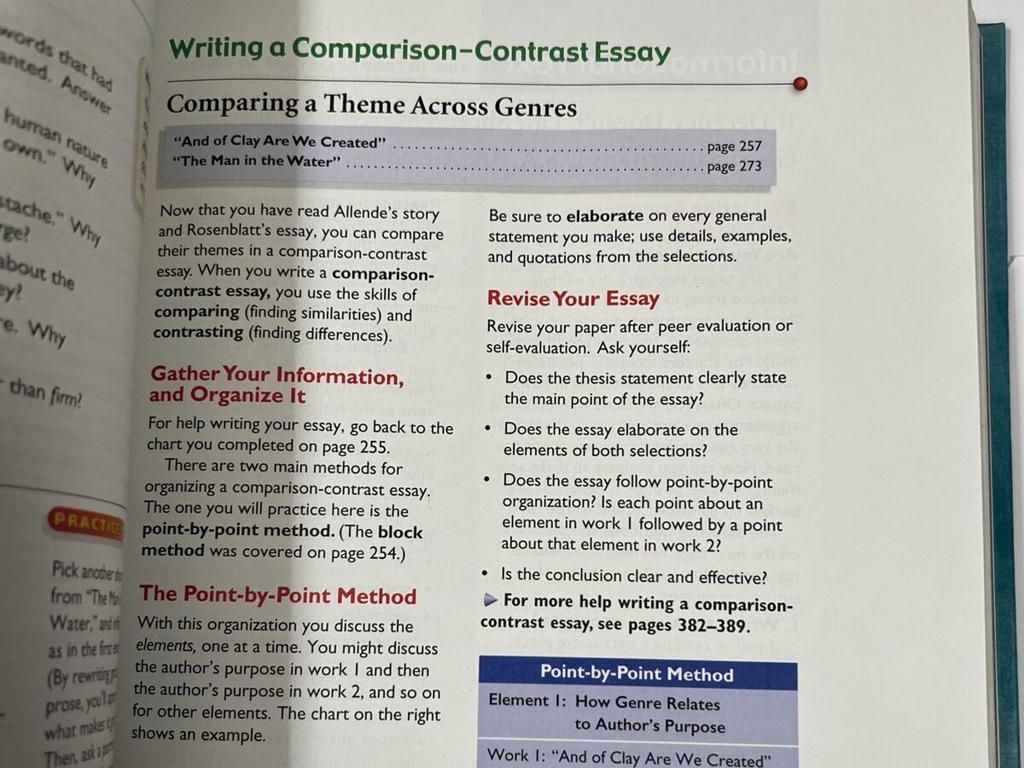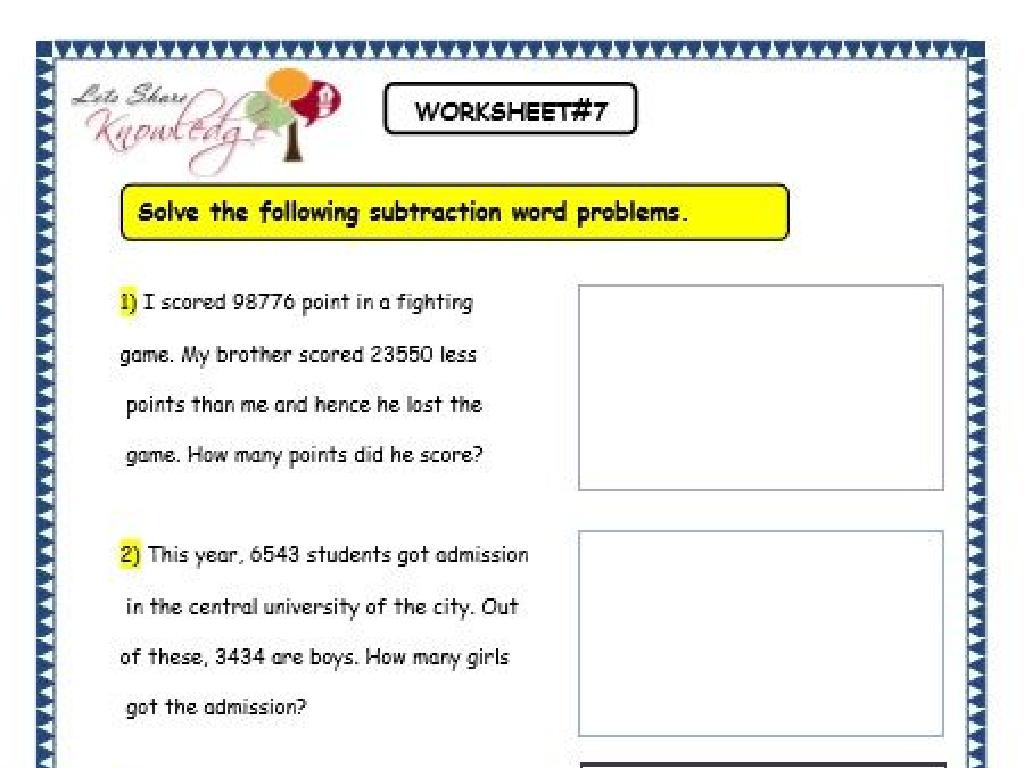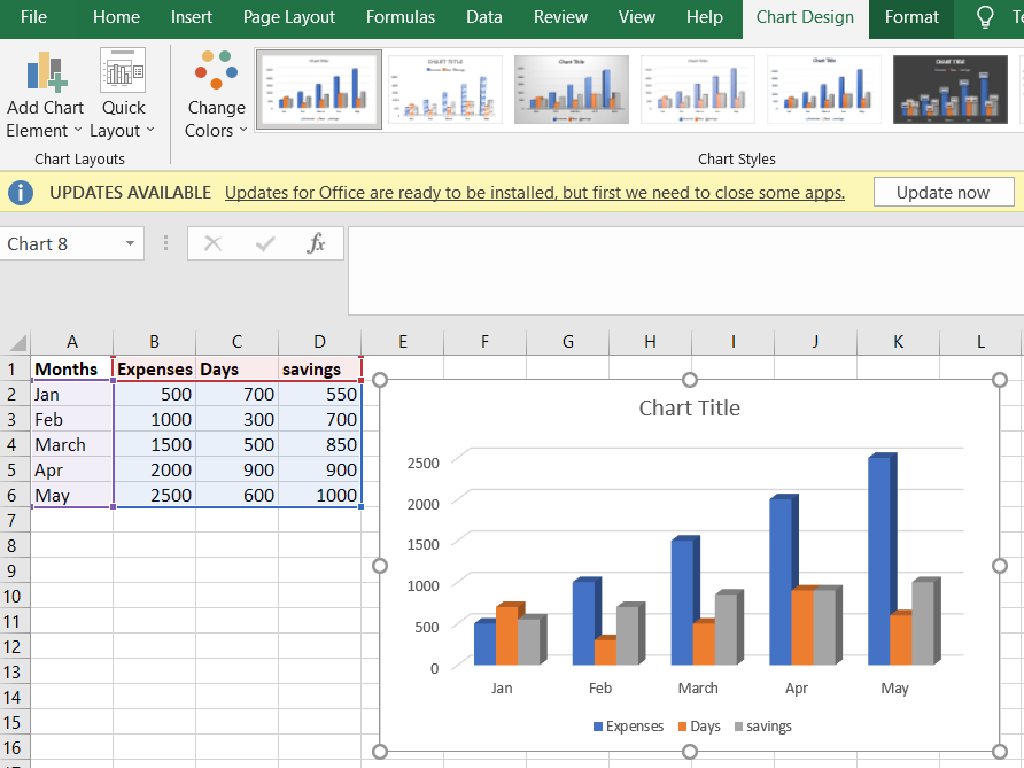Purchases: Do You Have Enough Money?
Subject: Math
Grade: First grade
Topic: Money
Please LOG IN to download the presentation. Access is available to registered users only.
View More Content
Welcome to Money Math!
– Learning about money uses
– Money is used to buy things we need or want.
– Understanding money’s value
– Coins and bills have different values.
– Calculating if we have enough
– Add up coins and bills to match item prices.
– Making smart money choices
– Decide what to buy with the money you have.
|
This slide introduces students to the concept of money, its uses, and its value. Start by explaining that money is a tool we use to exchange for goods and services. Show different types of money like coins and bills and explain their values. Teach students how to add up their money to see if they can afford an item. Emphasize the importance of making choices when spending money, as we often have to decide what we need or want the most. Use relatable examples such as buying a snack or a toy to illustrate these concepts. Encourage students to think about what they would like to buy and how they would make sure they have enough money for it.
What is Money?
– Money is used to buy things
– Money includes coins and bills
– Pennies, nickels, dimes, quarters, and dollars
– Different coins and bills values
– A penny is 1 cent, a nickel is 5 cents, a dime is 10 cents, and a quarter is 25 cents
– Learning to recognize money
– Practice identifying and counting money
|
This slide introduces the concept of money to first graders. It’s important to explain that money is something people exchange for goods and services. Show real or play coins and bills to help students recognize different forms of money. Explain that each type of coin and bill has a different value, and this value is used to determine how much of something you can buy. Use simple and relatable examples, such as buying a small toy or a piece of candy, to illustrate how money is used. Encourage students to practice identifying and counting money, which will be an essential skill for the next lessons on making purchases and understanding if they have enough money to buy something.
Identifying Money
– Recognize pennies, nickels, dimes, quarters
– A penny is 1 cent, nickel is 5 cents, dime is 10 cents, quarter is 25 cents
– Learn about $1, $5, $10 bills
– Bills are paper money, $1 is one dollar, $5 is five dollars, $10 is ten dollars
– Understand value of each money piece
– Each coin and bill has a number showing its value
– Practice counting money
|
This slide introduces students to the basics of U.S. currency, focusing on coins and bills commonly used in everyday transactions. Start by showing real or play money to help students identify each coin and bill by its size, color, and the number written on it. Explain that the value of money is indicated by these numbers. Engage the students in hands-on activities where they can practice grouping different coins to count up to the value of various bills. This will help them understand how different combinations of coins can equal the same amount of money. Encourage them to ask questions and share any prior knowledge or experiences with using money.
Counting Money: Do You Have Enough?
– Adding coins and bills together
– Practice counting money
– Let’s add different coins and see how much we get!
– Count by ones, fives, tens, twenty-fives
– Pennies = 1 cent, Nickels = 5 cents, Dimes = 10 cents, Quarters = 25 cents
– Understanding the value of money
– Knowing how to count helps us decide if we can buy something
|
This slide is aimed at helping first graders understand the concept of counting money to determine if they have enough to make a purchase. Start by explaining that money comes in different forms coins and bills and each has a value. Use real or play coins and bills to demonstrate how to add them up. Practice with the class by counting out loud, using pennies for ones, nickels for fives, dimes for tens, and quarters for twenty-fives. Reinforce the concept by having students practice with examples, and explain how this skill is used in everyday life to know if they can afford a toy or a treat. Encourage students to ask questions and provide them with simple exercises to reinforce the lesson.
Making Purchases: Understanding Money
– Every item has a price tag
– Price is what you pay for toys or snacks
– Match money to the price
– Use coins and bills to pay the exact amount
– What if we don’t have enough?
– We may have to wait and save more money
– Learning to make choices
– Sometimes we choose what we can afford
|
This slide introduces the concept of making purchases and the importance of understanding money to first graders. Begin by explaining that items in stores have a price, which is the amount of money needed to buy them. Show examples of price tags and coins and bills. Discuss what happens if we do not have enough money, emphasizing the value of saving and making smart choices. Use relatable examples like wanting to buy a toy or a treat. Encourage students to think about times they or their family had to pay for something and how they decided what to buy. This will help them grasp the concept of budgeting and the value of money.
Do You Have Enough Money?
– Understanding prices
– Price is how much something costs.
– Counting your money
– Add up coins and bills to see what you have.
– Making purchase decisions
– Ask, ‘Can my money buy this?’ before you choose.
– Practice with examples
– We’ll try buying items with different prices together.
|
This slide is aimed at teaching first graders the concept of making purchases and understanding if they have enough money to do so. Start by explaining what price means and how to look at price tags. Then, move on to counting money, using real or play coins and bills to help them add up the total amount they have. Next, teach them to compare the price of an item with the amount of money they have, to decide if they can afford it. Finally, engage the class with interactive examples where they can apply what they’ve learned by ‘buying’ classroom items with price tags using their counted money. This will help them grasp the concept of budgeting and making wise spending decisions.
Class Activity: Setting Up a Shop
– We’re opening a pretend shop
– Each student gets play money
– Try buying items with your money
– Choose items and calculate total cost
– Check if you have enough to pay
– If short on money, what can you afford?
|
This activity is designed to help students understand the concept of money and making purchases. Set up a small shop in the classroom with price tags on items. Distribute play money to the students, ensuring each student has a different amount to work with. Students will select items they wish to ‘purchase’ and calculate if they have enough money. This exercise will teach them to add up costs and make decisions based on their available budget. For those with insufficient funds, guide them to consider what they can afford or what they might need to put back. Possible variations of the activity could include offering discounts, dealing with change, or setting up a ‘bank’ where students can exchange money.
Money Mastery: Making Smart Purchases
– Congratulations on learning about money!
– Always count your money before buying
– Make sure you have enough for what you want
– Practice shopping with family at home
– Use play money or real coins and notes
– You’re becoming money-smart!
|
This slide wraps up the lesson on money and making purchases. Reinforce the importance of counting money before any transaction to ensure they have enough to pay for their items. Encourage students to practice this skill at home with their family members, using play money or real currency to simulate shopping experiences. This will help solidify their understanding of the concept of money and its use in everyday life. Praise their efforts in learning this important life skill and remind them that by practicing, they are on their way to becoming responsible with money.






